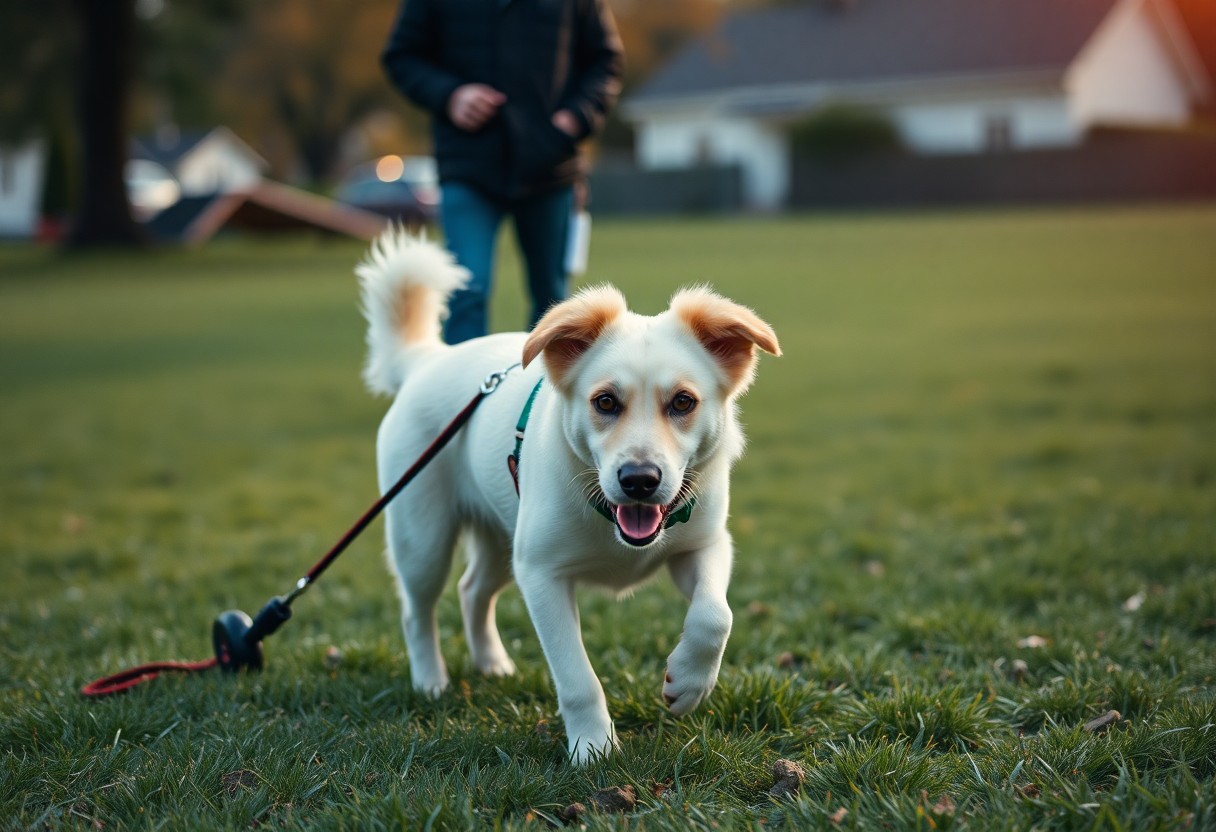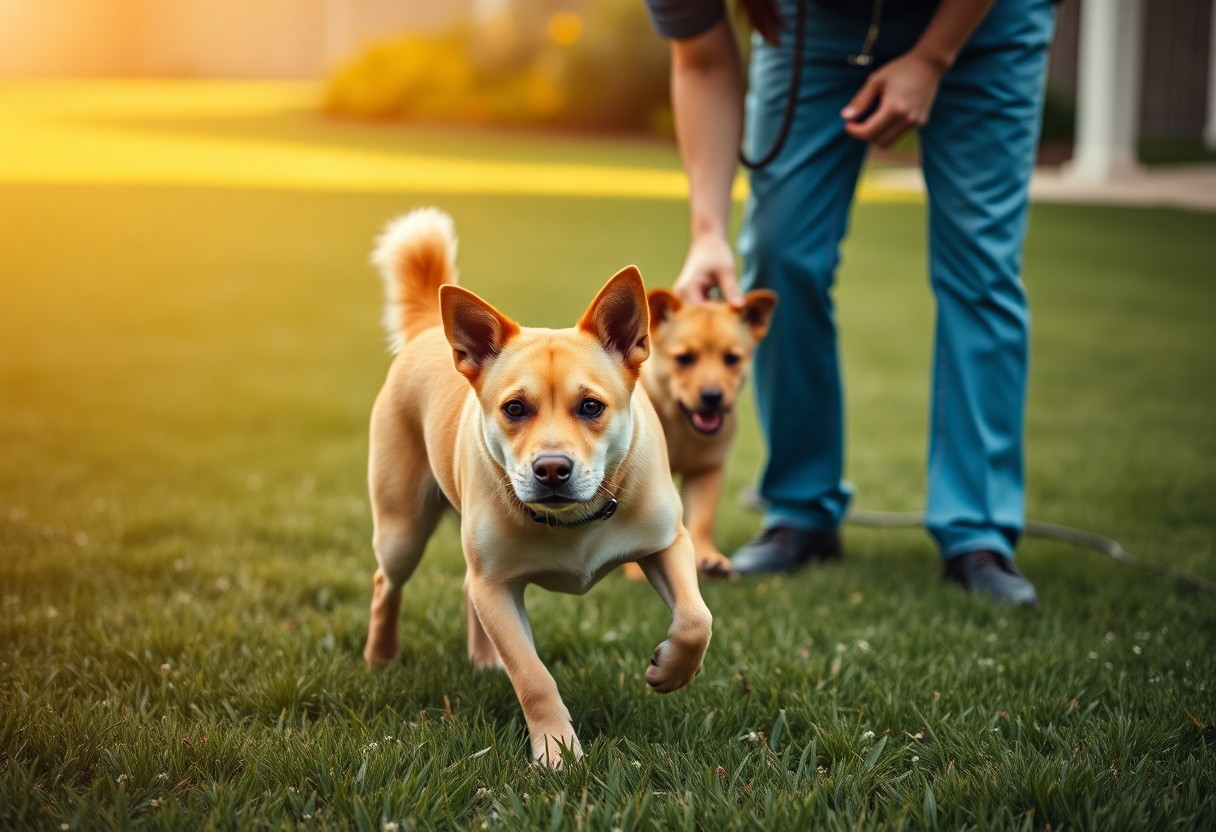Behavior such as scooting in dogs can indicate a variety of underlying issues that you should be aware of to ensure your pet’s comfort and health. When your dog drags its rear end across the floor, it often points to irritation or discomfort around the anal area. Understanding the common causes, including anal gland problems, allergies, or parasites, will help you identify what might be triggering this behavior and how to address it effectively. By paying close attention, you can take appropriate action to keep your dog happy and relieve any distress.

Key Takeaways:
- Dogs often scoot to relieve discomfort caused by irritated or full anal glands.
- Other reasons for scooting include allergies, parasites, or skin infections around the tail area.
- If scooting persists, it’s important to consult a veterinarian to diagnose and treat the underlying cause.
1. Scooting may indicate anal gland irritation or infection.
2. Allergies can cause itching leading to scooting behavior.
3. Parasites like worms often trigger scooting in dogs.
4. Dietary issues could result in discomfort prompting scooting.
5. Scooting might signal skin infections or irritations near the rear.
6. Consult a vet to diagnose and treat underlying causes.

The Anatomy of Scooting: What Happens Behind the Scenes
Scooting occurs when your dog drags its rear across the ground, often signaling irritation or discomfort around its anal area. This behavior is commonly linked to issues with the anal glands, which can become impacted or infected, leading your dog to try to alleviate the distress. To understand this better, explore Why Is My Dog Dragging Its Bottom? where more information about this peculiar yet common action is provided.
Typical Dog Anatomy and Common Irritants
Your dog’s anal glands are small sacs located near the anus, responsible for releasing a smelly secretion used for marking territory. These glands can become clogged due to firm stools, infections, or allergies. External irritants like fleas or contact allergens also spark itching, prompting scooting. Understanding your dog’s anatomy helps you identify when this natural behavior may point to discomfort requiring care.
How Internal and External Factors Contribute to Scooting
Internal issues such as parasites or allergies cause inflammation, while external factors like irritants or infections exacerbate itching. Together, they lead to persistent scooting. The constant irritation signals your dog to seek relief, often through dragging its bottom. The sensation results from both anatomical blockages and reactions to environmental triggers, making it important to consider all possible causes.
- Impacted anal glands cause pressure and discomfort.
- Parasites like tapeworms irritate the anal region.
- Allergies induce inflammation and itching around the anus.
- External irritants such as fleas further provoke scooting behavior.
- The combination of these factors can compound symptoms, intensifying your dog’s need to scoot.
The interplay between internal conditions, like gland issues or parasitic infections, and external triggers including fleas or allergens, often leads to your dog’s scooting. This behavior serves as a visible signal that something within your dog’s anatomy needs attention, whether it’s an obstruction, inflammation, or irritation. Treating the underlying cause requires recognizing the contribution of both internal and external factors, ensuring a comprehensive approach to comfort and health.
- Anal gland obstructions create uncomfortable pressure.
- Parasites provoke itching and irritation in the anal area.
- Allergic reactions cause inflammation and persistent discomfort.
- Environmental irritants exacerbate symptoms.
- The combined impact of these elements makes scooting a key indicator of underlying health issues.
The Top Culprits: Why Your Dog Might Be Scooting
Scooting often signals an underlying irritation or discomfort that your dog is trying to soothe. Common causes include impacted anal glands, parasitic infections, allergies, or skin irritations. Impacted glands might make your dog drag its rear on the ground persistently, while parasites like tapeworms can cause intense itching around the anus. Skin allergies, triggered by environmental or food factors, can also lead to redness and itching, prompting scooting behavior. By understanding these top culprits, you can better determine when to consult your vet. For additional details, check out Dog Scooting: Why It Happens and What to Do About It.
Allergies and Skin Irritations: The Unexpected Triggers
Your dog’s scooting might stem from allergies causing skin inflammation around the rear. Food sensitivities, pollen, or flea bites can provoke redness and itchiness, pushing your furry friend to drag its butt in an attempt to relieve the discomfort. Sometimes, you might notice additional signs like hair loss or excessive licking. Monitoring your dog’s exposure to potential allergens and consulting your vet can help identify and manage these irritations effectively.
Anal Gland Issues: Signs and Solutions
Full or infected anal glands are a frequent reason for scooting, as they create discomfort that dogs instinctively try to alleviate by dragging their rear. You might observe frequent licking of the area, foul odor, or swelling. Expressing the glands manually, either at home if you’re trained or by a vet, can provide swift relief. Regular check-ups prevent buildup and infections, especially in small breeds prone to gland issues.
Anal glands store a smelly secretion used for marking territory, but they can become impacted when they don’t empty naturally. This leads to swelling and inflammation, increasing the risk of abscess formation if left untreated. Dogs with chronic anal gland problems might require dietary changes, such as adding fiber to firm up stools and promote natural gland expression during defecation. Persistent problems might also warrant medical intervention or surgery in severe cases. Staying alert to early signs allows you to address the issue before it worsens.
Parasitic Infestations: When Worms Become More Than Just a Discomfort
Worm infections, particularly tapeworms, often cause anal irritation that leads to scooting. You might notice small white segments resembling rice grains around your dog’s anus or in bedding. These segments indicate tapeworm presence and usually result from fleas or ingestion of infected prey. Deworming treatments as prescribed by your vet effectively eliminate parasites and reduce itching, restoring comfort to your dog.
Beyond the irritation, parasitic infestations can cause nutritional deficiencies and secondary infections if untreated. Flea control plays a significant role since fleas act as intermediate hosts for some tapeworm species. Regular fecal exams during vet visits can identify less obvious infestations too. Taking a proactive approach with parasite prevention and treatment promotes your dog’s overall health and well-being, reducing the likelihood of recurring scooting episodes.

Behavioral Insights: Analyzing Your Dog’s Actions
Understanding why your dog scoots goes beyond physical symptoms; behavioral patterns often reveal underlying issues. Watching when and how frequently your dog scoots can signal if it’s a response to discomfort or a learned behavior. For example, timing after meals or play might hint at allergies or irritation. Noticing if your dog seems restless, anxious, or agitated before scooting can also help differentiate causes. Paying attention to these behavioral cues allows you to address the root cause more effectively, ensuring your dog’s overall well-being.
Psychological Factors: Anxiety and Stress Responses
- Dogs may scoot due to stress-induced behaviors, often stemming from anxiety.
- Separation anxiety or changes in environment can trigger nervous habits like scooting.
- Repetitive scooting might serve as a coping mechanism for emotional discomfort.
- Identifying stressful triggers, such as loud noises or unfamiliar people, aids in managing your dog’s anxiety.
After recognizing these psychological factors, integrating calming techniques or consulting a behaviorist can help reduce anxiety-related scooting.
Habits vs. Medical Conditions: Discerning the Difference
Scooting can sometimes be a habit formed by your dog rather than an indication of an ongoing medical issue. If the behavior happens sporadically without other signs like swelling or foul odor, it might be habitual. Conversely, persistent scooting accompanied by signs such as redness, inflammation, or discomfort usually points to an underlying medical problem. Noticing whether your dog responds to treatments or lifestyle changes can help you distinguish between behavioral patterns and genuine health concerns.
Distinguishing habits from medical conditions involves observing your dog’s scooting relative to other symptoms and environmental factors. For example, a dog who scoots mainly after grooming or play might have a habitual trigger tied to sensory stimulation rather than a physical ailment. Meanwhile, frequent scooting with consistent anal gland issues or infections demands veterinary attention. Keeping a detailed log of scooting incidents, associated activities, and symptoms can guide you in making informed decisions and seeking proper care when necessary.
Practical Solutions: How to Help Your Dog Find Relief
Tackling scooting effectively often begins with a close look at your dog’s hygiene and diet. Regularly cleaning your dog’s anal area with gentle wipes can reduce irritation, while adding fiber-rich foods or pumpkin can ease constipation and improve stool consistency, which lessens discomfort. You might also consider a warm compress to soothe inflammation or briefly applying a pet-safe topical ointment to calm itching. Staying observant of your pup’s behavior helps you catch recurring issues early and ensure they’re getting appropriate relief without delay.
Home Remedies and Lifestyle Changes
Incorporating a fiber supplement like canned pumpkin or psyllium husk into your dog’s meals often softens stools and supports regular bowel movements, which can alleviate anal gland pressure. Increasing daily exercise encourages healthy digestion and gland expression. You can gently express your dog’s anal glands at home if trained properly or with guidance from your vet, preventing impaction. Additionally, maintaining consistent grooming, especially trimming hair around the rear end, helps keep the area clean and reduces bacterial buildup that can cause discomfort.
When to Seek Professional Help: Signs It’s Time for a Vet Visit
If scooting persists beyond a few days, happens frequently despite home care, or your dog displays signs such as blood in the stool, excessive licking, swelling near the anus, or noticeable pain, scheduling a vet visit is necessary. Other red flags include sudden inability to defecate, lethargy, or a foul odor from the anal area, which may indicate infection or impacted glands requiring medical intervention. Early diagnosis and treatment can prevent complications and improve your dog’s comfort significantly.
Recurrent or severe scooting often signals underlying conditions like anal gland abscesses or infections that need professional care. Vets can perform thorough examinations, including anal gland expression or imaging if necessary, and prescribe antibiotics or anti-inflammatory medications. They may also check for parasites or allergies contributing to irritation. Prompt veterinary attention is vital if your dog shows systemic symptoms such as fever or loss of appetite, ensuring you address both the symptom and its cause comprehensively.
The Broader Implications: What Dog Scooting Tells Us About Pet Health
Observing scooting behavior provides insights beyond immediate discomfort, signaling underlying health or hygiene issues you might overlook. It can highlight everything from dietary imbalances affecting digestion to skin conditions triggered by allergies or infections. Scooting acts like an early warning system, urging you to evaluate your dog’s overall well-being—nutrition, parasite control, hygiene routines, and even stress levels. Ignoring these signals risks progression to more serious concerns, underscoring the value of attentive care and responsive adjustments to your pet’s health plan.
The Importance of Regular Vet Check-Ups
Consistent veterinary visits offer a proactive approach to detecting causes behind scooting, such as anal gland abscesses or parasitic infestations. Your vet can perform thorough examinations, including fecal tests or skin biopsies if needed, facilitating targeted treatments. These appointments not only address current symptoms but also help tailor preventive care like vaccinations, dental cleanings, and nutritional advice, reducing future scooting triggers. Scheduling biannual checks helps you stay ahead and maintain your dog’s optimal health.
Understanding Your Dog’s Body Language and Behavior
Decoding signs such as scooting, scratching, or restlessness equips you with a deeper understanding of your dog’s discomfort or emotional state. Subtle behaviors like tail tucking or avoiding eye contact can accompany physical symptoms, indicating pain or anxiety levels you might miss. Tracking these patterns over time sharpens your ability to pinpoint triggers and tailor your response—whether through modifications in diet, grooming, or environmental enrichment—to improve comfort and quality of life.
Diving deeper, recognizing variations in scooting frequency and accompanying behaviors paints a detailed picture of your dog’s health landscape. For instance, intermittent scooting followed by lethargy might suggest infections needing medical intervention, whereas occasional scooting linked with seasonal changes often points toward allergy management. Apps and journals tracking behavior can help you spot trends and communicate insights with your vet more effectively, ensuring interventions align precisely with your dog’s needs.
Summing up
With these considerations, you understand that your dog’s scooting can stem from various causes such as anal gland issues, allergies, or parasites. Observing your pet’s behavior and physical signs helps you determine when it’s time to consult your veterinarian. Prompt attention to this behavior ensures your dog stays comfortable and healthy, preventing potential complications. By monitoring your dog’s scooting, you take an important step in maintaining their well-being and addressing any underlying problems effectively.
Q: Why does my dog scoot on the floor?
A: Dogs often scoot on the floor to relieve irritation or discomfort around their anal area. This behavior can be caused by several reasons, such as anal gland issues, parasites like worms, skin allergies, or infections. When the anal glands become full, impacted, or infected, the dog may drag its rear end on the ground to try to alleviate the discomfort.
Q: How can I tell if my dog has anal gland problems causing scooting?
A: Anal gland problems typically present as swelling or redness near the anus, a strong, unpleasant odor, licking or biting the rear area, and frequent scooting. Your dog might also show signs of pain when sitting or defecating. If you notice these symptoms, it’s a good idea to have your veterinarian check the anal glands to see if they need to be expressed or if there’s an infection that requires treatment.
Q: What steps should I take to prevent or stop my dog from scooting?
A: To help prevent scooting, ensure your dog is on a regular parasite control program to manage worms and other parasites. Maintain a balanced diet to promote healthy stool consistency, as firm stools help naturally express the anal glands during defecation. Regular grooming and inspection of the rear area can help detect skin issues early. If your dog continues scooting after these measures, consult your veterinarian for a thorough examination and appropriate treatment.
 wagwagtail "only love can make your dog wag her tail"
wagwagtail "only love can make your dog wag her tail"
